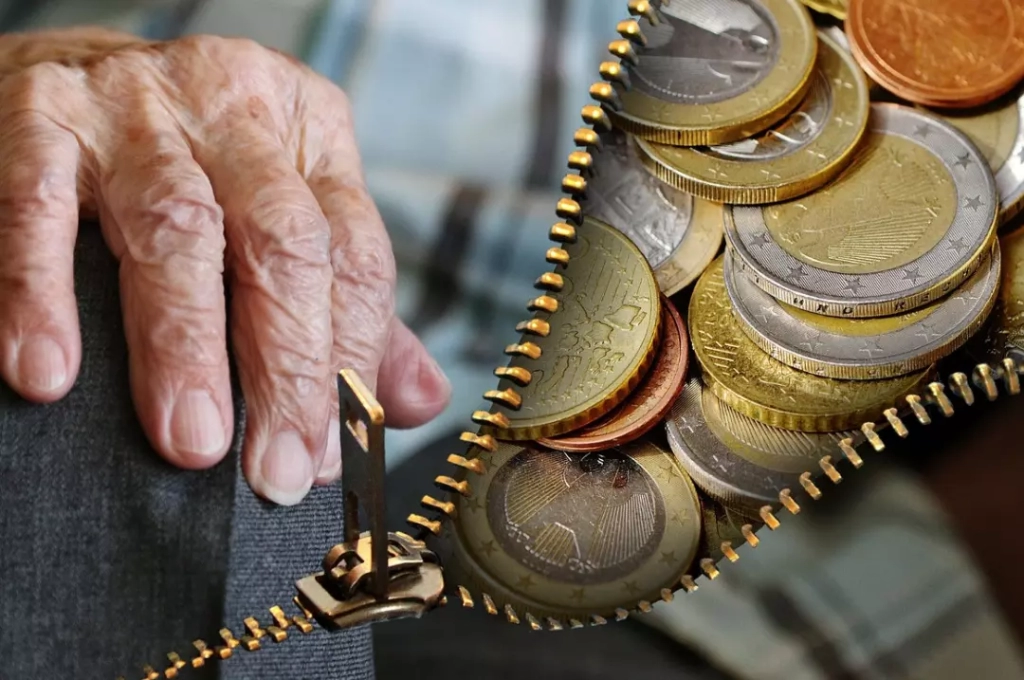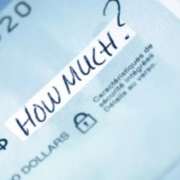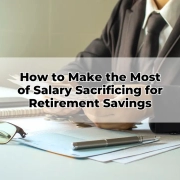What happens to your SMSF when you retire?
Table of Contents
ToggleSMSFs have gained significant popularity as a retirement planning tool, allowing individuals to have greater control over their superannuation investments. However, understanding what happens to your SMSF when you retire is crucial to ensure a smooth and secure transition into your golden years.
In this blog post, we will demystify the process and provide you with the essential information you need to navigate the transition from your Self-Managed Superannuation Fund (SMSF) to retirement.
Can you retire early with an SMSF?
Retiring early with an SMSF requires careful planning and consideration of several factors. Here are a few key points to keep in mind:
Financial stability
Retiring early means relying on your superannuation savings to support your lifestyle. Ensure that your SMSF has accumulated sufficient funds to sustain you throughout your retirement years.
Preservation age
The preservation age is the minimum age at which you can access your superannuation benefits. It varies depending on your date of birth. To retire early with an SMSF, you must have reached your preservation age.
Superannuation rules
Early retirement may affect certain aspects of your SMSF. For example, there may be restrictions on accessing your superannuation benefits or limitations on making contributions after retirement.
Lifestyle and expenses
Consider your desired lifestyle and estimated expenses in retirement. Assess whether your SMSF will generate enough income to cover your needs without the additional income from employment.
Retiring early with an SMSF offers potential advantages, such as greater control over investment strategies and the ability to tailor your retirement plan to your specific goals. However, it’s crucial to seek professional financial advice to ensure your SMSF is structured appropriately and aligned with your early retirement objectives.
What happens to your SMSF when you retire?
When you retire, your SMSF goes through a transition from the accumulation phase to the retirement phase. This transition brings about several important changes and considerations for your SMSF.
Here’s what happens when you retire:
Pension Phase
Upon retirement, you have the option to commence a pension from your SMSF. This means converting a portion of your superannuation savings into regular income payments to support your retirement lifestyle.
Minimum pension withdrawal
Your SMSF must comply with the minimum pension withdrawal requirements set by the government. These requirements specify the minimum amount you must withdraw from your pension account each year, based on your age and account balance.
Investment strategy
As you move into retirement, your SMSF’s investment strategy may need to be adjusted. The focus might shift from accumulation and growth to generating stable income and preserving capital. Reviewing and updating your investment strategy is essential to align it with your retirement goals and risk tolerance.
Compliance and reporting
Your SMSF will still be subject to compliance obligations and reporting requirements even after retirement. It’s crucial to ensure ongoing compliance with superannuation laws, including lodging annual returns, maintaining accurate records, and adhering to contribution and pension rules.
Estate planning
Retirement prompts a renewed focus on estate planning within your SMSF. Review and update your binding death benefit nominations and consider how your superannuation benefits will be distributed upon your passing. Seek professional advice to ensure your estate planning arrangements align with your wishes.
It’s important to note that while you’re in retirement, your SMSF can continue to grow and generate income through its investments. However, it’s essential to carefully manage and monitor your SMSF during retirement to ensure it remains compliant and aligned with your changing financial needs.

What is the preservation age for SMSF?
The preservation age is the minimum age at which you can access your superannuation benefits, including those held within a SMSF. The preservation age depends on your date of birth and is an important factor when considering retirement and accessing your superannuation funds.
Here’s what you need to know:
Preservation age
The preservation age varies depending on when you were born. As of the current rules, the preservation age is as follows:
- If you were born before July 1, 1960, your preservation age is 55.
- If you were born between July 1, 1960, and June 30, 1961, your preservation age is 56.
- If you were born between July 1, 1961, and June 30, 1962, your preservation age is 57.
- If you were born between July 1, 1962, and June 30, 1963, your preservation age is 58.
- If you were born between July 1, 1963, and June 30, 1964, your preservation age is 59.
- If you were born on or after July 1, 1964, your preservation age is 60
Accessing superannuation benefits
Once you reach your preservation age, you have the option to access your superannuation benefits. This can be done by starting a pension from your SMSF or taking a lump sum withdrawal, depending on your circumstances and retirement goals.
Considerations
While reaching the preservation age grants you access to your superannuation benefits, it’s essential to consider the potential impact on your retirement savings. Withdrawing your superannuation early may reduce the overall balance of your SMSF, affecting its ability to generate income and support you throughout your retirement.
Different preservation rules
It’s important to note that preservation rules may differ for specific situations, such as severe financial hardship or specific medical conditions. These circumstances may allow for accessing superannuation benefits before reaching the preservation age, subject to certain conditions and eligibility criteria.
What is the minimum pension withdrawal for SMSF?
When you have a Self-Managed Superannuation Fund (SMSF) and are in the retirement phase, there are minimum pension withdrawal requirements that you must meet to comply with superannuation regulations. These requirements ensure that retirees draw down a minimum amount from their SMSF pensions each year.
Here’s what you need to know:
Minimum pension amount
The minimum pension withdrawal amount is calculated based on a percentage of your SMSF pension account balance. The percentage varies depending on your age, as outlined below:
- If you’re under 65 years old, the minimum pension withdrawal is 4% of your pension account balance.
- If you’re between 65 and 74 years old, the minimum pension withdrawal is 5% of your pension account balance.
- If you’re between 75 and 79 years old, the minimum pension withdrawal is 6% of your pension account balance.
- If you’re between 80 and 84 years old, the minimum pension withdrawal is 7% of your pension account balance.
- If you’re between 85 and 89 years old, the minimum pension withdrawal is 9% of your pension account balance.
- If you’re 90 years old or older, the minimum pension withdrawal is 11% of your pension account balance.
Timing of withdrawals
The minimum pension amount must be withdrawn at least annually. It’s important to note that you have the flexibility to withdraw more than the minimum if needed, but you must meet or exceed the minimum requirement.
Potential consequences of non-compliance
Failing to meet the minimum pension withdrawal requirements can result in penalties and potential loss of tax concessions within your SMSF. It’s crucial to comply with these rules to maintain the tax advantages associated with SMSF pensions.

What happens to my SMSF investment property when I retire?
When you retire and have an investment property held within your SMSF, there are several options to consider regarding the future of the property.
Here’s what happens to your SMSF investment property when you retire:
Selling the property
One option is to sell the SMSF investment property. Yes, you can sell your SMSF property when you retire. By selling the property, you can convert the property value into cash, which can be used to fund your retirement lifestyle or reinvest in other assets. Keep in mind that selling a property may have capital gains tax implications, so it’s important to consult with a tax professional to understand the potential tax obligations.
Transferring the property
Instead of selling, you may choose to transfer the SMSF investment property from your SMSF to your personal name. This allows you to retain ownership of the property personally and potentially live in or rent it out outside of the SMSF structure. Transferring the property requires careful consideration of the potential impact on your personal finances, tax obligations, and eligibility for government benefits.
Retaining the property within the SMSF
You also have the option to keep the SMSF investment property within the SMSF structure. This allows the property to continue generating rental income and potentially appreciating in value, providing ongoing financial benefits during your retirement. However, it’s essential to ensure that managing and maintaining the property aligns with the SMSF’s investment strategy and complies with superannuation regulations.
Remember to carefully evaluate factors such as taxation, cash flow requirements, ongoing property management, and potential changes in your retirement income needs. By doing so, you can determine the best course of action for your SMSF investment property that aligns with your retirement objectives.
Can I live in my SMSF property when I retire?
Living in a property owned by your SMSF after retirement is generally not permitted under the superannuation laws. The purpose of an SMSF is to provide for your retirement income, not for personal use or primary residence.
Here’s what you need to know:
Sole Purpose Test
The sole purpose of an SMSF is to provide retirement benefits to its members. To comply with the superannuation laws, the SMSF must satisfy the “sole purpose test.” This test ensures that the SMSF’s investments and activities are solely for the purpose of providing retirement benefits and not for personal use or benefit.
Prohibition on personal use
Living in your SMSF property after retirement would be considered a breach of the sole purpose test. The property is intended to generate income for your retirement, such as through rental payments, rather than serving as your primary residence.
Limited exceptions
There are limited circumstances where living in an SMSF property may be allowed, but strict conditions apply. For example, in certain cases, a temporary arrangement may be permitted, such as when renovating or maintaining the property for sale. However, these exceptions are subject to specific guidelines and should be discussed with a qualified SMSF professional or financial advisor.
It’s important to note that using your SMSF property for personal purposes, including living in it after retirement, can result in severe penalties, loss of tax concessions, and potential legal ramifications. Compliance with superannuation laws is essential to preserve the integrity and tax advantages of your SMSF.
If you wish to live in a property after retirement, it’s generally advisable to transfer the property out of your SMSF and into your personal name. However, this decision should be made after careful consideration of the potential impact on your personal finances, tax obligations, eligibility for government benefits, and compliance with relevant property and tax laws.
To ensure compliance and make informed decisions regarding your SMSF and property holdings, seek professional advice from a qualified SMSF professional or financial advisor who can guide you through the legal and regulatory requirements.

Retirement and the management of your Self-Managed Superannuation Fund (SMSF) are important aspects of your financial journey. As you approach retirement, understanding what happens to your SMSF becomes crucial for making informed decisions and ensuring a smooth transition.
Remember, retirement planning is a personal journey, and your circumstances may differ from others. Tailor your approach to suit your specific needs and consult experts who can provide personalised guidance.









